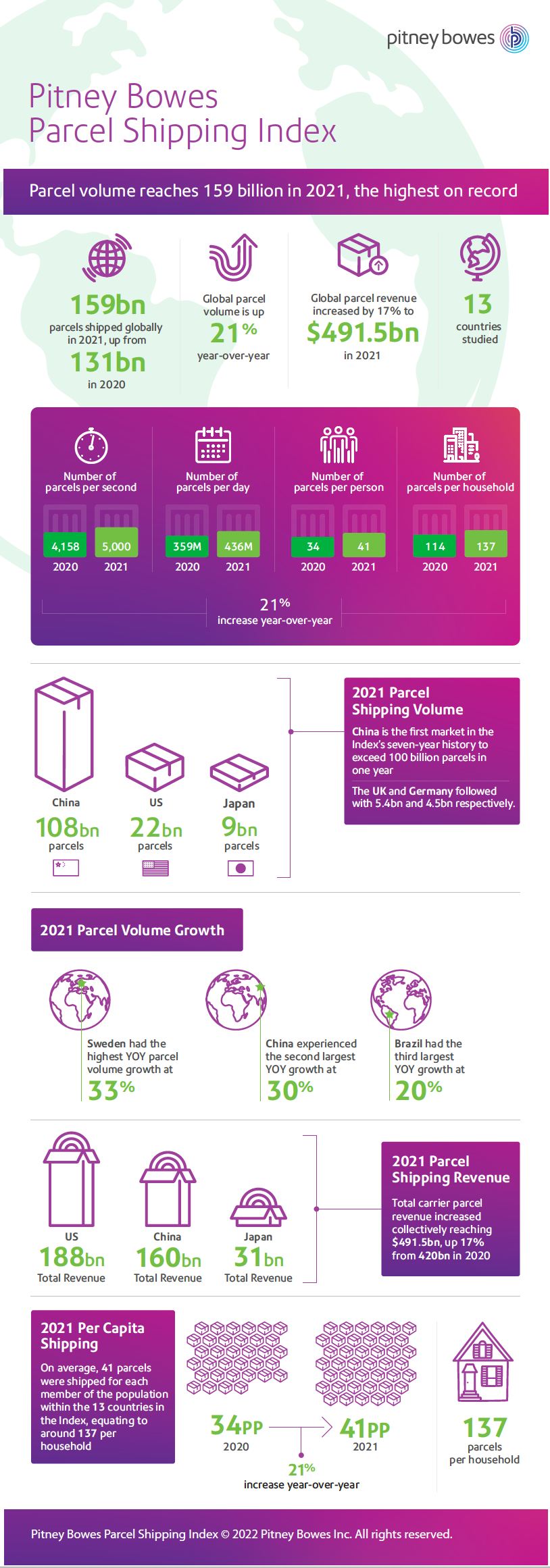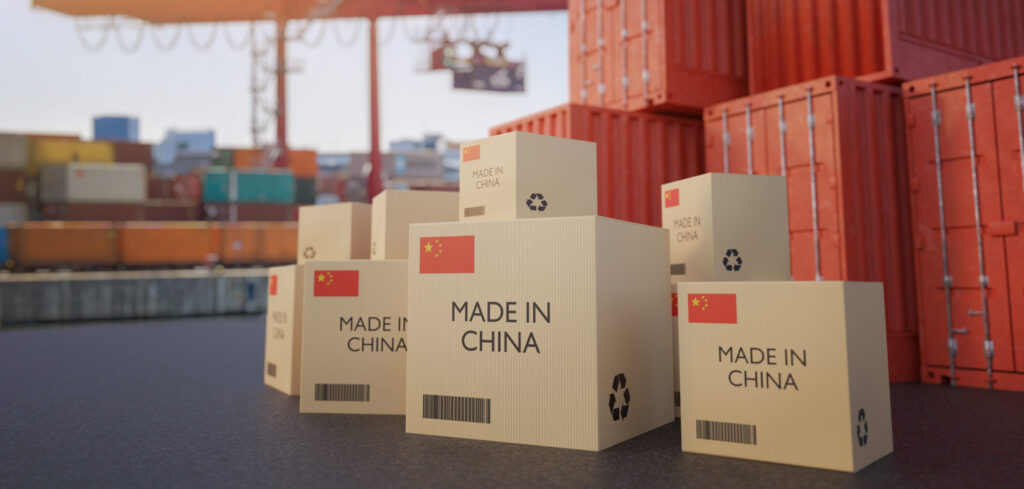Shipping and mailing company Pitney Bowes’s Parcel Shipping Index has revealed China has become the first country to ship 100 billion parcels in a year, as forecasted in its previous report.
The seventh edition of the Pitney Bowes Parcel Shipping Index found parcel volume increased across all regions in 2021. The index features 2021 data from 13 markets around the world. It found that China generated 108 billion parcels in 2021, in total, making it the first country to exceed 100 billion parcels within one year, as forecast in the previous report. According to the researchers, China’s growth in parcel volume represents a milestone for the shipping industry. Each day, China ships 300 million parcels, which is more than the smallest market in the Index, Sweden, ships in a year. Across the index, parcels shipped per capita averaged 41. Parcel volume per household is a new measure included in this year’s index. An average of 137 parcels were shipped per household across all countries, with China shipping the most at 218.
Pitney Bowes also found that the UK generates approximately 80 parcels per person. This was the highest of all 13 countries in the index, and an increase from 74 in 2020. In total, 5.4 billion parcels were generated in the UK in 2021, up 9% from five billion in 2020. Additionally, global parcel volume reached 159 billion in 2021, equating to 5,000 parcels per second. Total carrier revenue reached US$491.5bn. The Index estimates parcel volume could reach 216 billion or as high as 300 billion by 2027, with a 5.5%-11.5% compound annual growth rate (CAGR) from 2022-2027. All countries reported double digital carrier revenue growth except Japan. The USA once again generated the highest carrier revenue, at US$188bn; France generated the highest revenue per parcel at US$9.63. The average revenue per parcel was US$3.
Approximately 171 parcels were generated every second, equating to around 15 million parcels per day. On top of this, around 192 parcels were shipped per household and all major carriers in the UK reported parcel revenue growth in 2021. Of these carriers, Royal Mail generated the highest revenue of all major carriers at US$6.88bn, an increase of 13% year-over-year. Amazon Logistics followed Royal Mail in revenue terms reaching US$3.12bn in 2021. Amazon Logistics also generated the highest CAGR in revenue growth at 44% during 2015-2021. However, Yodel saw the highest year-over-year revenue increase of 33% to US$1.36bn, up from US$1.03bn the previous year. UPS also grew 27% year-over-year to US$2.15bn, up from US$1.69bn. And Hermes revenue growth dropped from 161% in 2020, to 20% in 2021. Overall, revenues reached US$2.98bn.
Worldwide, parcel volume reached 159 billion in 2021, up 21% from 131.2 billion in 2020, and 5,000 parcels were shipped per second compared to 4,160 in 2020. This led to parcel revenue reaching US$491.5bn, up 14% from US$429.5bn in 2020. The highest CAGR 2015-21 for parcel volume was generated by China at 32% followed by Brazil at 20%. Similarly, the highest CAGR 2015-21 for parcel revenue was generated by China at 26% followed by India at 15%. This meant that China remained the report’s largest market in terms of parcel volume, reaching 108 billion, and it generated the highest year-over-year parcel growth in the Index, up 30% from 83 billion in 2020. Nevertheless, the USA remained the market with the highest carrier revenue, reaching US$188bn, an increase of 16% year over year. India generated the highest carrier revenue growth, bouncing back following a decline in 2020. In 2021 India generated a 32% year-over-year increase in parcel revenue reaching US$5.25bn. Additionally, the UK generated 80 parcels per capita, the highest parcel per person of all 13 countries in the Index.
Jason Dies, executive vice president and president of sending technology solutions at Pitney Bowes, said,“2021 was a pivotal time for the parcel shipping industry as it experienced the aftershocks of 2020 and faced new challenges. It is incredible to see carriers generating strong revenue growth despite the headwinds. As consumer shopping habits evolve and inflationary pressures persist, it will be interesting to track the 2022 results.”



